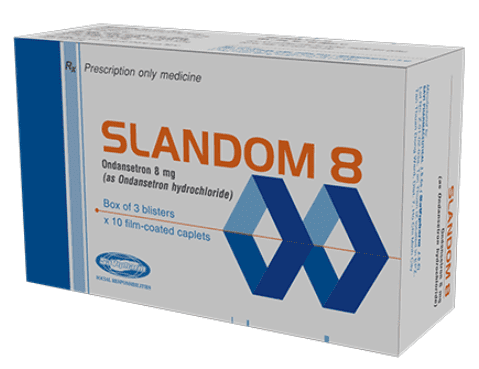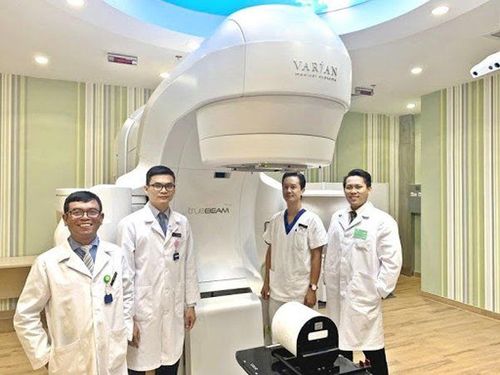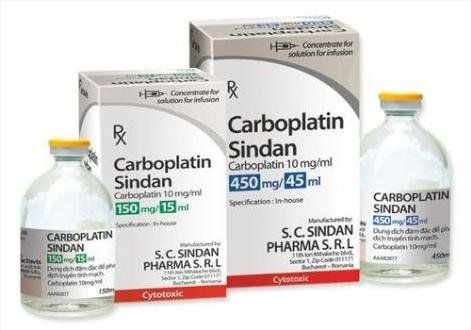This is an automatically translated article.
The article was written by MSc Doan Trung Hiep - Head of Department of Radiation Therapy and Technician Nguyen Van Han - Radiation Therapy Center - Vinmec Times City International Hospital.Radiation therapy is a method of using high-energy ionizing radiation beams to destroy cancer cells, while maximizing the protection of healthy tissue around the tumor site and is one of the best treatment methods. for head and neck cancer. External radiation therapy is a non-invasive treatment that uses an accelerator system to direct radiation beams to the tumor site, so when receiving external radiation, you do not need to be isolated after treatment.
With the advancement of technology in cancer treatment today, the most advanced and modern radiotherapy techniques can be applied in the treatment of head and neck cancer. Radiotherapy Center of Vinmec Times City International Hospital has successfully applied VMAT technique (circular volume modulated radiotherapy) in the treatment of head, face and neck cancer in order to increase tumor treatment efficiency and minimize the risk of cancer. side effects for the patient. However, radiation therapy can still cause some common side effects such as: dermatitis, oral mucositis, dry mouth, pain...
1. Essential information about patient care during radiation therapy
1.1 Early side effects Early side effects appear less than 90 days from the start of radiation therapy, increase from week 2 of radiation therapy, may continue to become more severe about 7-10 days after the end There is a gradual reduction in symptoms thereafter, and side effects usually improve after treatment ends.
Fatigue: Patients may often feel mild fatigue, however, radiation fatigue improves within a few weeks of finishing treatment. Radiation dermatitis with manifestations such as: Change in skin color, peeling, blistering, bleeding... Oral mucositis, infection of the oral mucosa, tongue, sore throat, mouth. Loss or decrease in taste when eating, dry mouth, pain, change in voice... Hair loss at the treatment site: usually occurs in the nape of the neck. In addition, patients may also lose weight during treatment.
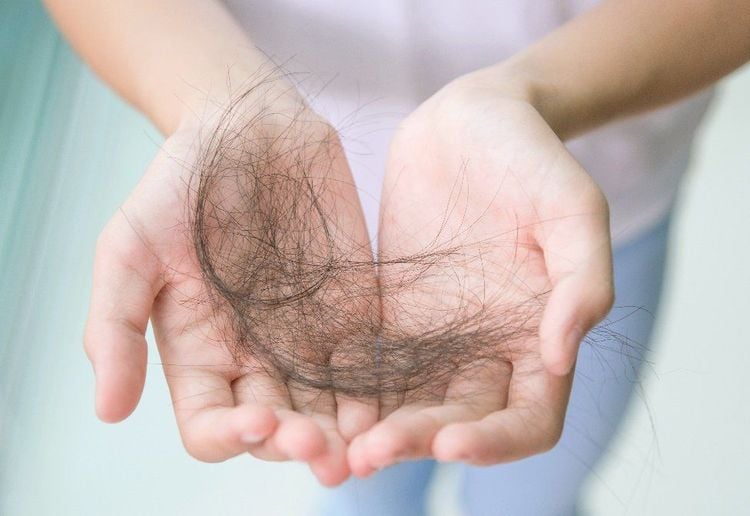
1.2 Late side effects Late side effects appear more than 90 days after starting radiotherapy
Dry mouth and tooth decay. Difficulty opening the mouth or stiffening the jaw. Jaw bone necrosis. Thyroid changes often occur with hypothyroidism after radiation therapy. Changes in hearing: hearing loss. Scleroderma of the skin and subcutaneous tissue in the area of radiation therapy. Difficulty swallowing due to fibrous, muscle atrophy of the pharynx. 2. Care recommendations for patients receiving radiation therapy in the head and neck area 2.1 Skin care for radiation therapy Almost all patients undergoing radiation therapy for head and neck cancer have different degrees of radiation treatment skin problems. Ranging from changes in skin color to dry, moist peeling. Depending on the extent, we have appropriate treatment and management.
2.2 Radiation Dermatitis Grade 1: Change in skin color, erythema, rash, mild burning or possibly dry peeling. Grade 2: The patient has increased burning pain, moist skin peeling at places where there is a lot of rubbing or folds, lesions in the skin area < 50% of the field of view. Grade 3: Exfoliative dermatitis extends beyond folds, ulcers > 2cm, skin necrosis up to the fascia, easy bleeding on contact, skin lesions > 50% of field of view. Grade 4: Serious, life-threatening consequences, extensive skin necrosis or ulceration, damage to the muscle and bone layers, bleeding in the irradiated skin.

Dermatitis caused by radiation therapy in the head and neck area at Vinmec: after more than 5 years of operation, treating hundreds of head and neck cancer patients, the Radiation Therapy Department of Vinmec Times City Hospital recorded only 02 patients with grade 3 dermatitis. , only 08 % dermatitis grade 2, most other patients only dermatitis grade 1, equivalent to a common sunburn. 2.3 Prophylaxis and skin care during radiation therapy 2.3.1 Skin protection Wear soft, cotton, sweat-absorbent clothing. Wear a loose-fitting shirt to avoid rubbing the collar against the skin of the radiation treatment area. Specialized shirts for radiation therapy patients can be purchased at medical equipment stores. Avoid direct sunlight on the irradiated skin (especially between 10am and 3pm). Cover the exposed skin with sunscreen, towel when going out. Do not apply adhesive tape to the irradiated skin area. Moisturize the radiation treatment area:
Apply radiation protection cream as prescribed by the doctor. Do not arbitrarily use other skin creams. Clean the skin with physiological saline before applying the cream. Apply the cream gently around the irradiated skin, apply a thin layer, do not overlap 2-3 times a day. Apply cream 1-2 hours before radiation therapy or 1 hour after radiation treatment. Do not apply the cream right before radiation therapy. Note: Do not let a thick layer of cream stick on the skin of the treatment area to reduce the effect of radiation.
2.3.2 Skin hygiene Do not rub the skin of the radiation treatment area, do not scratch, do not rub or touch the skin of the radiation treatment area much, reduce friction as much as possible. Use a soft towel to clean and dry the radiation area when bathing. Do not shower with water that is too hot or too cold. Do not use soaps or shower gels that are harsh or cause skin irritation. Use baby shower gels.
Note: Clean hands before cleaning skin. Don't let your nails get too long when taking care of your skin.
2.3.3 Dental care Before receiving radiation therapy in the head and neck area, the patient will be examined by a dental specialist. If there is a carious tooth, an abscess of the tooth root, the tooth must be treated before radiotherapy (Usually, it will be treated 1 week before the start of radiation therapy).
Mucositis is a dangerous complication that can affect the patient's life. It can appear on the tongue, lips, gums, floor of the mouth and roof of the mouth causing difficulties in eating, speaking, swallowing and breathing, usually occurring at 2-3 weeks after the start of radiation therapy and the damage is usually reversible. 8-10 weeks after the end of radiation therapy.
2.3.4 Oral mucositis grading Grade 1: mild pain, rash appears Grade 2: ulceration, pain but patient can still swallow solid food Grade 3: Severe pain, erythema and widespread ulceration, person inedible illness Grade 4: Severe pain, inability to eat, life-threatening

2.3.5 Prevention and dental care during radiation therapy Dental hygiene
Use a small, soft-bristled toothbrush, brush your teeth after each meal, as well as after waking up every day. Use a fluoride toothpaste like Sensodyne to prevent as well as protect teeth from decay. Use dental floss to clean teeth after eating (if there is inflammation, do not use). Do not brush teeth when there is periodontitis, gingivitis, bleeding, oral mucositis grade 2 or higher. Periodic dental examination at the request of the doctor or when there are abnormal problems in the teeth. Cleaning and moisturizing the oral cavity
Gargle with physiological saline regularly, continuously for 2 hours / time. Gargle with antiseptic water as prescribed by BS (Betadine Mouth Wash). Rinse for about 20-30 seconds. Regularly use temporomandibular joint exercises or use sugar-free gum to chew and exercise TMJ, for the purpose of preventing jaw tightness after treatment. Use tongue stick and soft gauze to clean the tongue (if there is damage to the tongue, do not use). Use antifungal medication exactly as prescribed by your doctor (if any). Clean teeth and mouth after eating and before sleeping. Drink plenty of water or drink water regularly to keep your mouth moist. Avoid smoking, drinking alcoholic beverages, this can make your mouth ulcer worse. Regularly check your teeth daily to recognize and prevent signs of oral infections.. Periodic dental check-ups every 3-6 months.
3. Diet for patients receiving radiation therapy for head and neck cancer
When undergoing radiation therapy, most patients feel pain in the mouth, loss of taste or loss of appetite, so patients are at risk of losing weight during treatment. Here are some tips on nutrition for patients receiving radiation therapy to the head and neck area. Take time to rest and relax. Psychological problems such as anxiety or fatigue also increase nausea:
Eat soft, cold foods. Avoid dry, hard, crunchy, sticky, spicy and salty foods. Eat small meals, 5-6 meals a day. Milk supplement for cancer patients such as Forticare (ready-to-drink bottle containing 200 Kcal/box), Prosure ... Ensure nutrition, especially protein, protein to avoid weight loss >10% of body weight . Change the way food is prepared so that the patient is not bored. Nutritional content ensures 25-30 Kcal/kg body weight/day. Drink plenty of water to keep your mouth dry. Monitor your weight weekly. Nutritional supplementation intravenously if the patient has oral mucositis grade 3 or higher but cannot eat by mouth, weight loss of more than 10% of body weight. Some types of milk used for sick people:
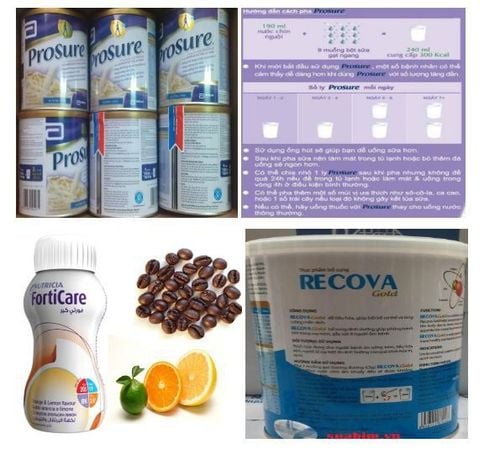
Vinmec International General Hospital is one of the hospitals that not only ensures professional quality with a team of leading medical doctors, modern equipment and technology, but also stands out for its examination and consultation services. comprehensive and professional medical consultation and treatment; civilized, polite, safe and sterile medical examination and treatment space. Customers when choosing to perform tests here can be completely assured of the accuracy of test results.
SEE ALSO:
Advantages of VMAT Volume Modulated Radiation Therapy Things to Know About Volume Modulated Radiation Therapy (VMAT) How many types of radiation therapy are there for cancer? Which option is reasonable?
Please dial HOTLINE for more information or register for an appointment HERE. Download MyVinmec app to make appointments faster and to manage your bookings easily.







